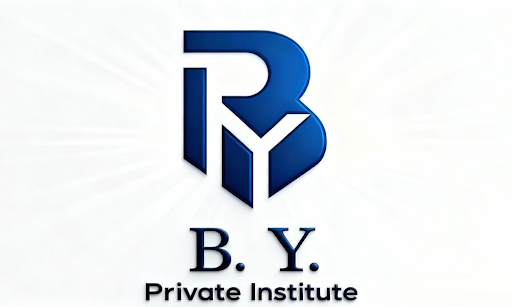How are cross-chain transactions and interoperability saving blockchain's blushes?

The blockchain story has captivated heads of nations, CEOs of large enterprises, the entrepreneurship minds of startup teams, as well as the average individual. There is no doubt that this technology has had its fair share of mainstream buzz. And it has spurred a multi-billion-dollar market, slowly coming to terms with the possibilities that blockchain avails. While this notion was the consensus a year ago, reports emanating from the tech world show that the blockchain craze is losing steam. And so, this begs the question: How did a technology that promised to disrupt the entirety of the global economy find itself pushing for new narratives to help reclaim its title as a universal innovation?
A lot of publications available on the internet blame blockchain’s demise on its inability to scale. While this is a given, scalability does not rank highest in blockchain’s list of travails. Yes, the bitcoin blockchain is still hovering around the mediocre 7 transactions per second. But countless other blockchains have implemented different algorithms and consensus models to help boost their transaction speed to figures that are as high as 30,000 TPS. In contrast, Visa Network’s transaction threshold is 24,000 TPS, and in reality, it hardly ever goes beyond the 17000 TPS mark, regardless of the volume of transactions it processes.
Judging from this revelation alone, blockchain networks should be rubbing shoulders with centralized and popular payment networks. However, this is not the case. The blockchain movement has stalled, although it got a major boost recently when President XI Jinping reinstated China’s stance on the subject.
What Is Blockchain’s Major Flaw?
There are reasons to believe that blockchain and crypto’s major flaw is the siloed culture that had since been established as the industry’s default business model. Crypto networks are often standalone ecosystems, which are not privy to the operations of other networks, even though they have similar or relatable functions. Thus, the global crypto community is further disintegrated into smaller fragments, and this naturally creates a divide in the crypto industry and an embargo for decentralization. More importantly, crypto teams are in the habit of driving unnecessary competition by comparing their achievements with the successes of other networks with similar use cases. As such, the blockchain and crypto growth, which should thrive on forged alliances, is eroded by a childish knack for gaining the upper hand.
To achieve mainstream adoption, the crypto community must learn one or two things from centralized entities and how they attained global dominance. Take, for instance, the role of APIs and data sharing protocols that had helped the internet reach new heights.
How Then Can We Put an End to This?
For the web 3.0 mantra to come to fruition, blockchain must find a way around these barriers. Luckily, some firms see blockchain’s siloed structure for what it is. And they are exploring ways to enable data and resource-sharing features between two or more blockchain networks. Simply put, there is a growing demand for interoperable networks that could share data and even allow users to perform inter-blockchain transactions. These functionalities are known as Interoperability and Cross-Chain Transactions, and below are some solutions, making strides in this regard.
Bytom
Bytom prides itself as the bridge between digital assets. It has created an ecosystem that relies on the interoperability of three chains to allow users to exchange one digital asset for the other without the need for intermediaries. To do this, the platform introduced a layer 2 protocol, MOV, that powers a decentralized and collaborative ecosystem for multiple coins. The three core parts of MOV are Value Exchanged Magnetic Contract, Decentered Cross Chain Gateway, and a High-Speed sidechain. In essence, Bytom can coordinate the seamless cross-chain transactions as well as exchange of value between its mainchain and sidechain. And since this project is open source, other networks can adapt it, which bodes well for blockchain’s broader cross-chain movement.
Cosmos
Cosmos, on the other hand, takes a different and yet effective approach to facilitating cross-chain transactions. Here, the solution achieves interoperability by utilizing Inter-blockchain communication (IBC) protocol, which functions as the TCP/IP internet protocol. While noting that established blockchain networks are not compatible with this protocol, Cosmos introduced peg zones that allow it to connect blockchains to the Cosmos Hub, where users can communicate with multiple blockchains via a standardized language.
Chainlink
In this case, Chainlink opts for an Oracle-based design, as it processes off-chain data and enters them into a blockchain. To do this, the process relies on off-chain APIs and presents users a way to bridge blockchain networks and existing infrastructures on other networks. Notably, Chainlink had partnered with interbank transactions and data transfer enabler, Swift.
Quant
Quant is a bit different from the above-mentioned cross-chain transaction facilitators, as it does not run a blockchain. Instead, it is a protocol that can operate over blockchains to create a multi-blockchain interface, thereby allowing users to utilize two or more blockchains at the same time. Hence, users can adopt the storage infrastructure of one blockchain network while opting for another for its value transfer activities.
How Does This Affect Blockchain?
Note that the afore-mentioned solutions are just a few of the projects tackling blockchain’s interoperability challenges. The proliferation of this class of solutions is a clear indication that developers are moving on from the scalability narrative to even more pressing issues. Interoperability and cross-chain transactions enablers are giving people new reasons to take chances on blockchain’s disruptive nature. While this is a given, startups ought to start implementing protocols from scratch that would allow their network to collaborate freely with other blockchains.




